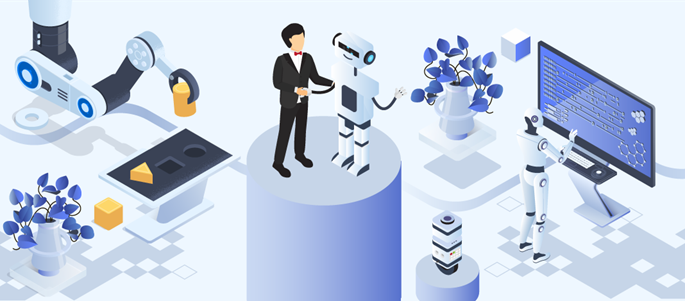Robotic Process Automation

Robotic Process Automation (RPA) is an advanced technology that builds an intelligent software robot that can emulate human interactions with a business process. RPA does not use machines, but they implement so-called software bots. They do not perform physical work as physical robots in the industry, but control digital processes by imitating work steps on a user interface. RPA bots are capable of logging into various applications and systems and can then perform rule-based routine operations such as filling out forms, moving files or extracting data from documents, reading a PDF file, scanning it for data, and sending the data somewhere else which can be useful for the management of supply chains and fully automate entire business processes. For the past decade there’s been growing discussion on automation and many leading companies are enthusiastically seizing the latest devices utilizing RPA technology to automate thousands of processes and tasks.
RPA has evolved from three main technologies called screen scraping, workflow automation and artificial intelligence. Screen scraping is the act of copying information that shows on a digital display so it can be used for another purpose. Workflows can help streamline and automate repeatable business tasks, minimizing room for errors and increasing overall efficiency. Artificial intelligence involves the ability of computer systems to perform tasks that require human intervention and intelligence.
What makes RPA so appealing is its efficiency and propensity for producing positive business outcomes. There are lots of advantages in using RPA.
- A well-calibrated RPA can perform any repetitive task that would otherwise be left to a human automatically.
- An employee who’s performing a task that an RPA could handle isn’t doing something else that’s potentially more productive.
- An RPA robot can perform repetitive tasks over and over, much faster than a human, and it won’t get tired. If your productivity is being bottlenecked by a certain task taking too long, RPA is one way to improve this problem.
Though there are advantages to RPA, there are some significant drawbacks.
- It can become a serious decoy from the necessary long-term work needed to digitize and make processes and administrative work more efficient. There is a risk that you may focus on quick fixes rather than doing things the correct way from the start.
- RPA bots can’t detect some obvious errors that a human would be able to immediately point out. If your data has problems with it, RPA robots will not call it out but pass it on, magnifying an error that might have otherwise been caught.
- Some problems aren’t a good fit for RPA, especially when the stakes are high. For example, if you need to handle your purchase invoices, it’s likely a better idea to use software that can understand and manage the data correctly from the start.
RPA software is called RPA vendors. UiPath is leading the “automation first” era championing a robot for every person and enabling robots to learn new skills through AI and machine learning. The IBM Robotic Process Automation offering helps you automate more business and IT processes at scale with the ease and speed of traditional RPA. SS&C’s Blue Prism is a global leader in enterprise RPA and intelligent automation, transforming the way work is done.
RPA will be one of the pioneering technologies utilized in innovations. By making room for innovation, it will make an impact well beyond faster and more efficient business processes which accomplish the aim of advancing technology for humanity.
